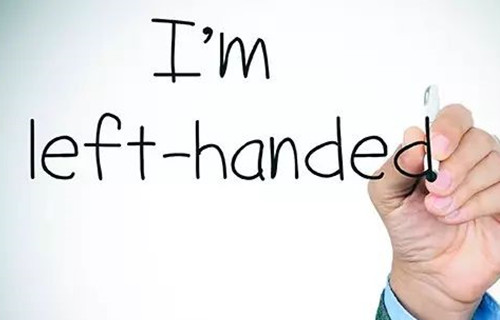By Julia Gorham
Did you know that about 10 percent of the population prefer their left hands? And that genetics plays a large role?
Did you know that left-handed children are generally right-brain dominant, they are often more creative, emotional and think holistically?
Scientist Clyde Francks, isolated a gene called LRRTM1 that contributes to left-handedness. This means that it can be inherited and is predominantly from the father’s side.
Here are some facts on left handed people:
- You can discover which hand your child favours from a very young age (7 to 9 months old), however, it is only definite between the age of 3 and 6 years. Take note of which hand they repeatedly choose to reach for a toy or when touching something, and remember that when very young most babies are ambidextrous.
- The corpus callosum (the part of the brain that allows communication between the two halves of the brain) is up to 11% larger in left-handed people.
- Left-handed men who graduate from university earn 26% more than their right-handed peers. In fact, some of the world’s wealthiest people are left-handed (e.g. Bill Gates and Oprah Winfrey).
- There is a high tendency in twins for one to be left-handed.
- Left-handers reach puberty on average 4 to 5 months after right-handers.
- New research suggests that left-handed people often perform better than right-handers at fast or difficult tasks that involve lots of information or stimuli. Lefties may be better at playing fast computer games, talking while driving in heavy traffic and flying a jet aeroplane – activities that need both hemispheres of the brain to process information quickly.
- Lefties often favour their left eyes as well, when using cameras, telescopes and microscopes.
Parenting tips for left handed children
- Let your child enjoy his/her creative freedom to develop their strong artistic side.
- Encourage your child to participate in sport, as this is where lefties often excel. This may be because the right side of the brain controls spatial awareness, which is directly linked to the dominant left hand. This gives lefties an advantage when thinking in three dimensions.
- Remember that there are considerations you need to keep in mind – such as supplying left-handed scissors, smudge-free pencils, making the computer’s mouse left-friendly, giving them a left-handed desk, etc.
- Encourage creativity and right-brain thinking. For example: Have your child write their name as usual and then ask them to do it in mirror writing (right to left, rather than left to right). Repeat it upside down. There are dozens of other activities you can find to stimulate their natural right-brain tendencies.
- Learn left-handed writing techniques that will help your child with aching wrists, smudged work, bad posture and slow writing. There are subtle, yet vital differences in posture, grip and letter formation that not all teachers are aware of.
- Teaching your left-handed child how to do a task such as tying a shoelace may prove difficult. In order to have the child see the hand movements in the proper direction, sit opposite your child rather than next to or behind them. Be your child’s mirror.
- Don’t ever try to force your child to write with their right hand. Allow them to follow their natural preference because this is where their strengths lie.





